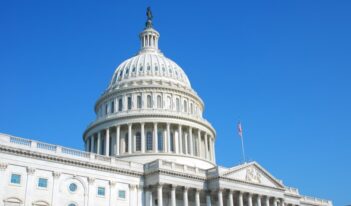
What is lost when those with something to say join the mass comments bandwagon?
Agencies, courts, and academics agree that notice-and-comment rulemaking is not a referendum. But that conceptualization presents a challenge when an agency is confronted with mass comments. If agencies are not counting but reading comments, and if mass comments are duplicative and often devoid of content beyond a strong expression of values or preference, then what do they add?
Are 50,000 identical submissions different than just one with the same content?
My own view is that in most—not all—cases they are not. Yes, expressions of preference can be relevant to agency policymaking, as Professor Nina Mendelson has written. But counting comments is a terrible way of aggregating preferences.
It is also possible that mass comments with little direct substantive value will indirectly reveal something about second-order considerations, such as how a proposed rule is likely to be received or complied with. But these instances will be fairly rare and fairly subtle.
Still, if mass comments are sometimes useful, and not harmful, maybe we should leave well enough alone. But mass comments do have costs. First, they are burdensome for agencies—manageable, and perhaps worth the burden, but not cost-free.
Second, and more importantly, they siphon off what could be valuable comments. This point is best made with an example.
In 2007, Congress created the Public Service Loan Forgiveness Program (PSLF). The idea behind the program was simple: The federal government would forgive its student loan to any person who had spent 10 years in a public service job, was currently so employed, and had made 120 monthly payments on the loan.
Because the program was prospective, nothing happened for a decade. Then, in 2017, the applications started to come in. Hilarity did not ensue.
The good news is that, as of April 1, 2021, the U.S. Department of Education had forgiven $452,691,032 in student debt owed by 5,467 individuals. That is also the bad news, for it turns out that more than five million people have applied for forgiveness. An extraordinary 98 percent of applications have been rejected.
Something has gone badly wrong. Perhaps the statutory or regulatory criteria are too demanding, or there are hidden technical obstacles tripping people up, or applicants are woefully misinformed about eligibility and the scope of the program, or there has been an administrative fiasco within the Education Department. Most likely, all of the above have played some role.
In the summer of 2021, the Education Department set out to figure out what is amiss. It issued two public notices. The first notice announced the formation of a negotiated rulemaking committee to review and develop proposed amendments to its PSLF regulations. The notice is thin on details, but presumably, the question the committee will seek to address is whether the Department’s own regulations are substantively or procedurally too demanding.
The second notice was a Request for Information seeking “information in the form of written comments that may include information, research, and suggestions regarding the administration” of the PSLF. The Education Department hoped that these comments would “identify operational improvements” and “inform determinations about technical improvements, borrower experiences, policy considerations, or other factors that should be considered to improve access to PSLF.” The notice went out of its way to say that any comments “with respect to regulatory matters” were to be made as part of the negotiated rulemaking process; here it was trying to identify potential improvements to the “operational administration of the program.”
If ever there was a golden opportunity for useful public input, this was it. Five million people have had a lousy experience with the “operational administration of the program.” Surely many of them have something useful to say about how their application was handled, whether they received adequate guidance or information, or the professionalism or lack thereof of the agency.
The comment period closed in September, but additional submissions have continued to trickle in. As of November 2021, the Request for Information had generated an impressive 48,332 comments.
Some commenters recounted personal experiences, drawing on their “situated knowledge,” and offered useful suggestions or identified problems for the Education Department to address.
But mainly the Department received tens of thousands of unhelpful submissions through two mass comment campaigns. My review of the dockets indicates that about 28,000 comments contained all or some of the same four-paragraph lament, or a close variation thereof. (I have been told that this campaign was organized by the National Education Association (NEA), but I have not been able to confirm that this was the case.) This stock comment complained that the costs of education are too high, labeled administration of the PSLF “ineffective,” urged that “all red tape and bureaucratic hurdles” be removed, and noted disproportionate burdens on women and borrowers of color.
This is a classic unhelpful comment. The comment tells the agency things it already knows, seeks measures beyond the scope of the proceeding and beyond the agency’s statutory authority, and is hopelessly non-specific.
Another mass comment campaign, led by the Student Borrower Protection Center and apparently picked up by some organizations, such as the United Church of Christ, produced about 7,500 comments. Most of these contained a 13-sentence message (or portion thereof) not dissimilar to the submissions from the other campaign—both refer to “red tape and bureaucratic hurdles,” for example. The Student Borrowers Protection Center also submitted a spreadsheet with 8,125 entries, most containing this same text or a version thereof, that gathered the individual submissions in a single document.
As is typical in mass comment campaigns, some of these messages were personalized. The Student Borrower Protection Center suggests that the submitter “share a little bit about you, your organization, your profession, and how long you have worked in it. Also, feel free to share why you decided on your career. Share how you or people you know have been impacted by student debt and problems with Public Service Loan Forgiveness.”
But the Education Department is seeking information about administrative problems. It knows there are lots of fine people with public service jobs, that many of them are laboring under heavy debt, and that it would be liberating to have that debt forgiven. It is trying to find out whether and how its own operations have stood in the way of achieving the program’s goals. Useful personalization would focus on what exactly went wrong for this person in their interaction with the agency. Importantly, such comments are valuable even if they are duplicative. If one person found a certain instruction misleading, that is interesting and worth considering. But if 15,000 people report that the instruction was misleading, then it is clear there is a problem.
The important question, then, is how agencies can obtain more meaningful input.
The most obvious strategy is to ask specific questions. The Education Department had some idea about what could be wrong. Why not list a set of possible problems and ask commenters to state which ones they encountered? The advocacy groups that organized the campaigns also could have guided their members toward more specific submissions.
The agency could also have taken a page from the Consumer Financial Protection Bureau’s “Know Before You Owe” rulemaking. There, the Bureau posted alternative versions of new forms and FAQs to obtain helpful input. A sophisticated agency could also compile metadata, such as heat maps showing where website visitors hovered. And this is just the sort of inquiry for which the late lamented Regulation Room was designed.
Instead, between 35,000 and 40,000 concerned and engaged people with potentially useful information largely wasted their time in clicktivist playacting. These people may think their voices were heard. But that would be a happy misconception. With only a little guidance and nudging, these individuals could have been of real help.
The Education Department recently announced significant changes to the PSLF that should meaningfully increase the number of loans forgiven. The NEA was quick to claim substantial credit. It seems unlikely, however, that NEA’s thousands of comments and emails to the agency had much impact. Instead, steering engaged and knowledgeable individuals to the submission of identical generalities, however pungently phrased, was a giant missed opportunity.
This essay is part of a six-part series entitled Mass Comments in Administrative Rulemaking.




